All products featured are independently chosen by us. However, SoundGuys may receive a commission on orders placed through its retail links. See our ethics statement.
JBL Flip 7 vs Bose SoundLink Flex (2nd Gen): Should you Flip? Or Flex?
Published onMarch 26, 2025



Portable speaker showdown! If you need a Bluetooth speaker for camping trips, beach days, or just blasting tunes on the go, the JBL Flip 7 and Bose SoundLink Flex (2nd Gen) are two solid options. Priced the same at $149, both pack a rugged design and great sound, but some key differences might make one a better fit. In this JBL Flip 7 vs. Bose SoundLink Flex (2nd Gen) comparison article, I’ll break down everything you need to know to help you decide which one’s right for you.
Editor’s note: This is the first version of this article, which was published on March 26th, 2025. Updates will follow as the market changes.
What’s it like to use the JBL Flip 7 compared to the Bose SoundLink Flex (2nd Gen)?
The JBL Flip 7 is compact, lightweight (560 g), and shaped like a small water bottle, making it easy to toss in a bag or backpack for the day. You can use it horizontally or upright, and its new PushLock system includes two attachment options: a carabiner or a small finger loop for easy carrying.
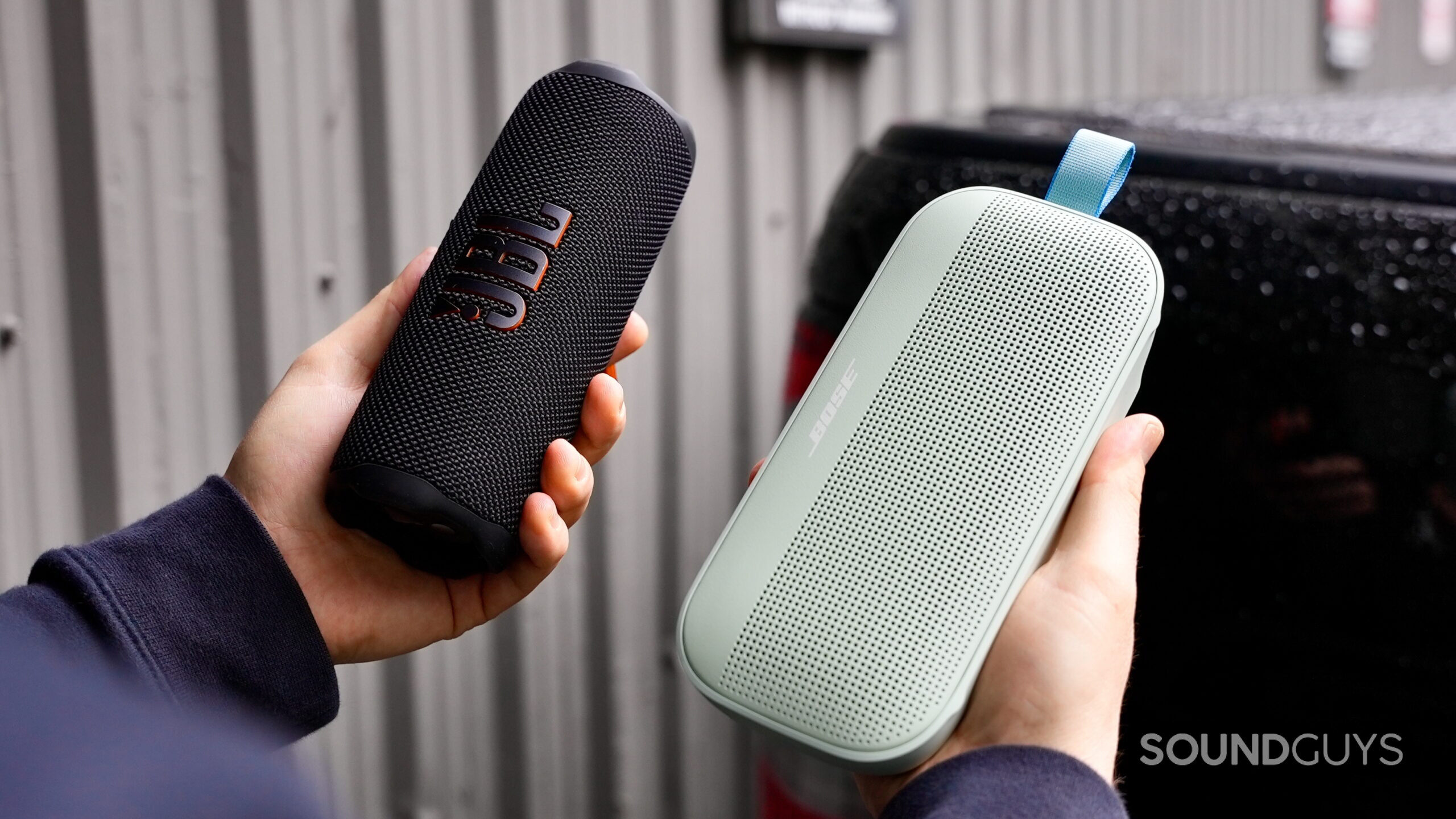
The Bose SoundLink Flex (2nd Gen) is also reasonably lightweight (589 g), although its enclosure is slightly bigger. It has a rectangular design with a built-in fabric loop, but if you want to clip it to a bag, you’ll need to bring your own carabiner. It’s also one of the few portable speakers that still features a built-in microphone for taking phone calls or accessing your Voice Assistant.
Both speakers are rugged and built for the outdoors. The Flip 7 is wrapped in durable fabric with rubber bumpers protecting its passive radiators, while the SoundLink Flex (2nd Gen) is encased in silicone-coated rubber for extra durability. They’re also fully dustproof and waterproof for weather resistance but with some differences.
The Flip 7 has an IP68 rating, meaning it can be submerged deeper than the SoundLink Flex (IP67). However, while the Flip 7 sinks, the SoundLink Flex (2nd Gen) floats, making it a better choice for poolside or beach use if you’re the accident-prone type.
How do you control the JBL Flip 7 and Bose SoundLink Flex (2nd Gen)?
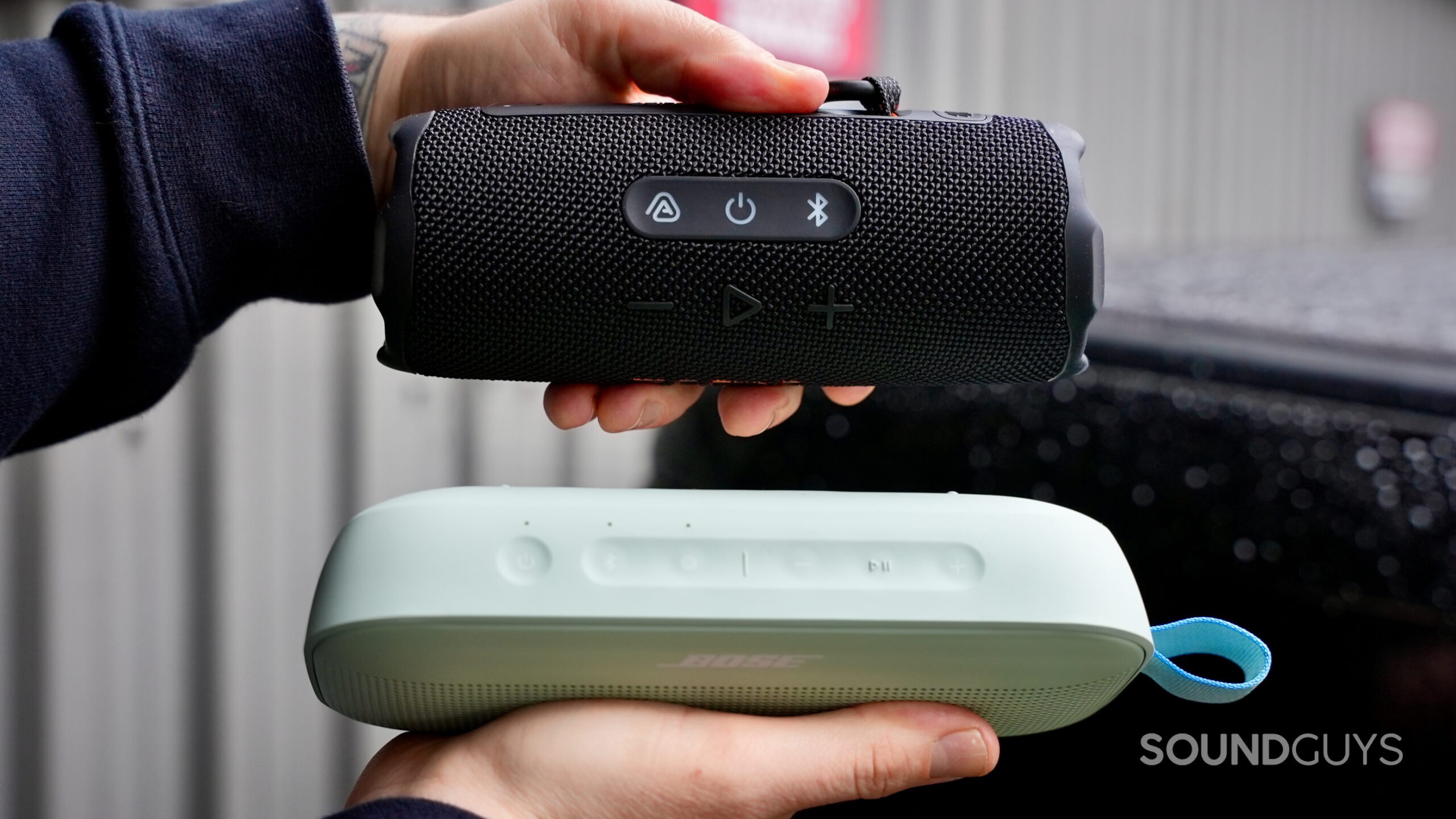
The JBL Flip 7 and Bose SoundLink Flex (2nd Gen) operate via physical controls located on top of each speaker’s enclosure. I must say I vastly prefer the raised controls on the Flip 7. They’re much easier to find and provide a satisfying tactile click when pressed, compared to the Bose’s controls, which are recessed and a little mushy feeling when pressed. Below is a breakdown of how these controls operate.
JBL Flip 7 controls:
| Action | Power button | Bluetooth button | Auracast button | Play button | Volume + | Volume - |
|---|---|---|---|---|---|---|
| Action Press 1x | Power button Turn on device | Bluetooth button Enter pairing mode | Auracast button Connect with other JBL Auracast supported speakers | Play button Play / Pause | Volume + Volume up | Volume - Volume down |
| Action Press 2x | Power button | Bluetooth button | Auracast button | Play button Next track | Volume + | Volume - |
| Action Press 3x | Power button | Bluetooth button | Auracast button | Play button Previous track | Volume + | Volume - |
| Action Press and hold | Power button | Bluetooth button | Auracast button | Play button Engage audio over USB (while inserting the cable at the same time) | Volume + | Volume - |
Bose SoundLink Flex (2nd Gen) controls:
| Action | Power button | Bluetooth button | Shortcut button | Volume - | Play / Pause | Volume + |
|---|---|---|---|---|---|---|
| Action One press | Power button Power on / off | Bluetooth button Enter pairing mode | Shortcut button Access shortcut (Voice assistant default) | Volume - Volume - | Play / Pause Play / pause / Answer call | Volume + Volume + |
| Action 2x presses | Power button | Bluetooth button | Shortcut button | Volume - | Play / Pause Next track / End call / Decline call | Volume + |
| Action 3x presses | Power button | Bluetooth button | Shortcut button | Volume - | Play / Pause Previous track | Volume + |
| Action Press and hold | Power button | Bluetooth button | Shortcut button | Volume - Volume - (faster) | Play / Pause | Volume + Volume + (faster) |
Should you use the apps of either JBL Flip 7 or Bose SoundLink Flex (2nd Gen)?
Casual listeners don’t need to bother with the JBL Portable or Bose Music app to enjoy their new speaker, but both apps offer some useful extras if you like to tweak. You can link compatible speakers or pair two identical models for stereo sound, but when it comes to EQ options, JBL takes the win.
The JBL Portable app offers a 7-band customizable EQ, letting you fine-tune the Flip 7’s sound much further than Bose’s basic 3-band EQ. Adjusting just Bass, Mids, and Treble feels pretty outdated at this point.
This is also where you’ll find access to set up the SoundLink Flex’s shortcut button (select between Spotify Tap or Voice Assistant Activation) or the Flip 7’s Playtime Boost feature if your battery is running low.
How do the JBL Flip 7 and Bose SoundLink Flex (2nd Gen) connect?
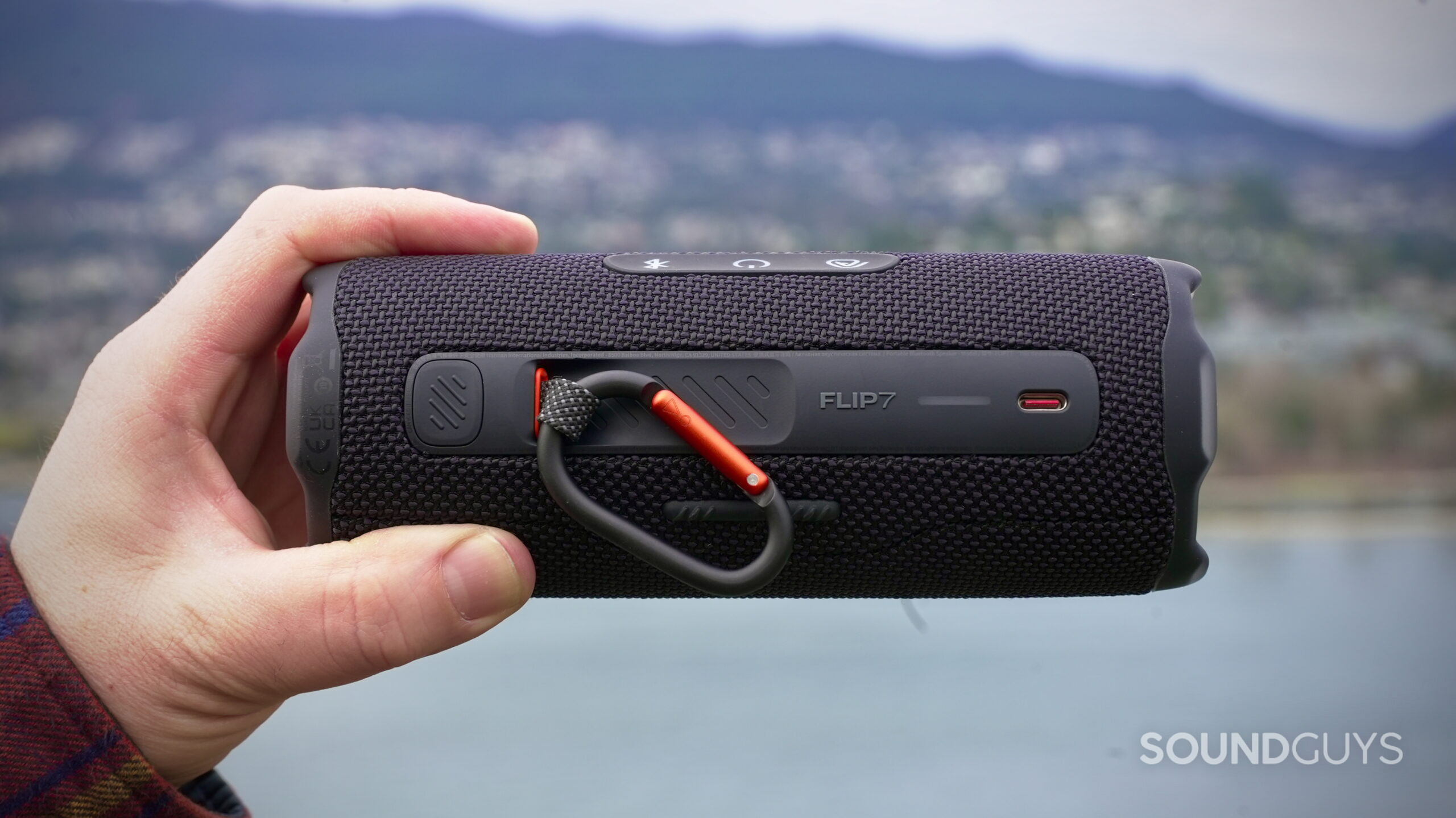
The JBL Flip 7 connects to your device via Bluetooth 5.4, while the Bose SoundLink Flex (2nd Gen) uses Bluetooth 5.3. There’s no big deal there; however, both speakers offer higher-quality listening options beyond basic Bluetooth codecs.
The Flip 7 supports only the SBC codec over Bluetooth but allows lossless audio playback over a USB-C connection. Meanwhile, the SoundLink Flex (2nd Gen) supports SBC and AAC over Bluetooth, along with Snapdragon Sound for improved audio quality. If paired with a Snapdragon Sound-certified phone, it will automatically try to prioritize the aptX codec.
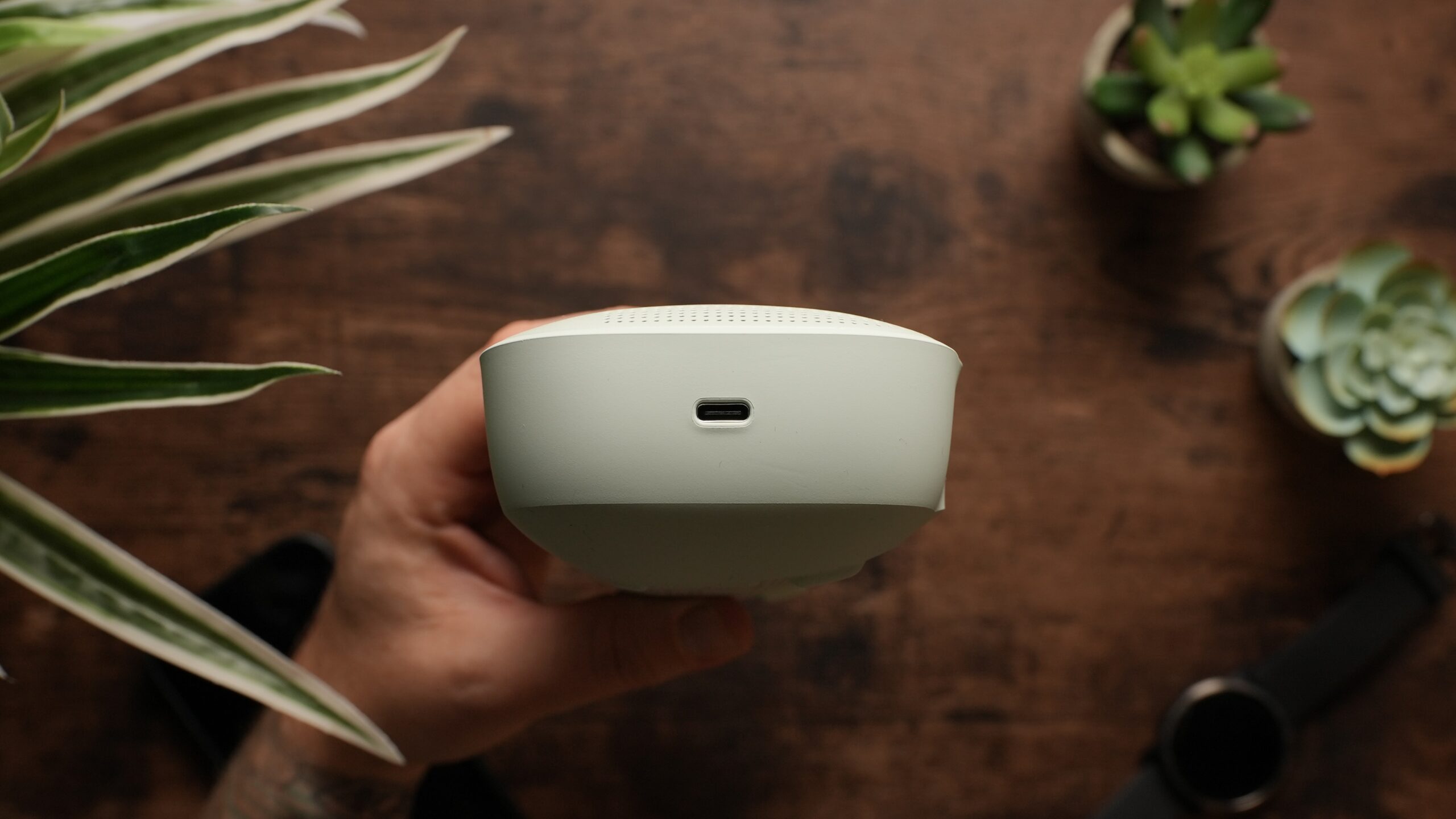
Regarding each speaker’s ability to connect with other speakers, there’s a few things to know. Firstly, the Flip 7 now uses Auracast to connect with other Auracast-supported JBL speakers, and is not compatible with JBL speakers that still use PartyBoost. This means you can’t pair a Flip 7 with a Flip 6, for example, but you can connect it to any of the more recent JBL speakers like the Xtreme 4, the Charge 6, and the Clip 5. You also still need to pair an identical model for stereo performance.
While the Bose SoundLink Flex (2nd Gen) can connect to other Bose Smart Soundbars, since it relies on a different app than the original SoundLink Flex (it uses the “Bose” app rather than the “Bose Connect” app), it doesn’t offer any backward compatibility, meaning you can’t pair it with a 1st Gen for stereo performance either.
Is battery life better on the JBL Flip 7 or Bose SoundLink Flex (2nd Gen)?
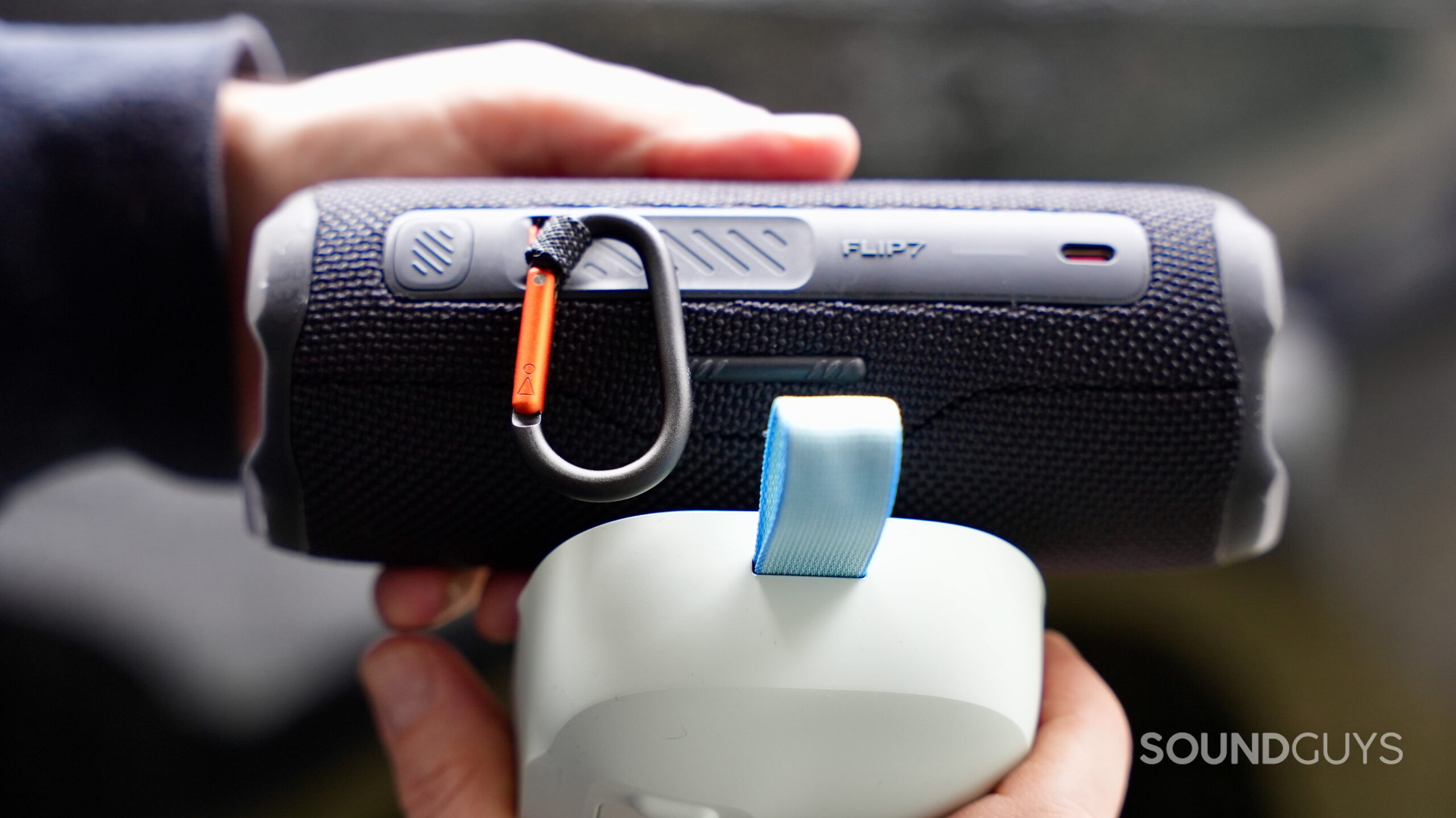
The Flip 7 has a slight edge when it comes to battery life. It advertises 14 hours of playback off a single charge under regular operation (listening at a reasonable volume without your bass frequencies cranked), and that you can squeeze an extra two hours of playback out of the Flip 7 by engaging its “PlaytimeBoost” feature.
This feature looks good on paper, but it’s just an EQ setting that cuts out most of your low-end, preventing your speaker from working too hard and, therefore, extending its battery life. It sounds similar to a podcast EQ preset, mostly mids and treble. It’s not great.
The SoundLink Flex (2nd Gen) offers 12 hours of playback off a single charge, so it’s a bit of a wash here. Ultimately, 12 hours of battery life is about average for portable speakers of this size, and performance will always depend on how loud you crank your speaker and, as mentioned, whether you’ve increased any of the available bass sliders in the app’s EQ.
Does the JBL Flip 7 sound better than the Bose SoundLink Flex (2nd Gen)?
The JBL Flip 7 and Bose SoundLink Flex (2nd Gen) both deliver impressive sound for portable Bluetooth speakers, but they have some key differences in their default tuning.
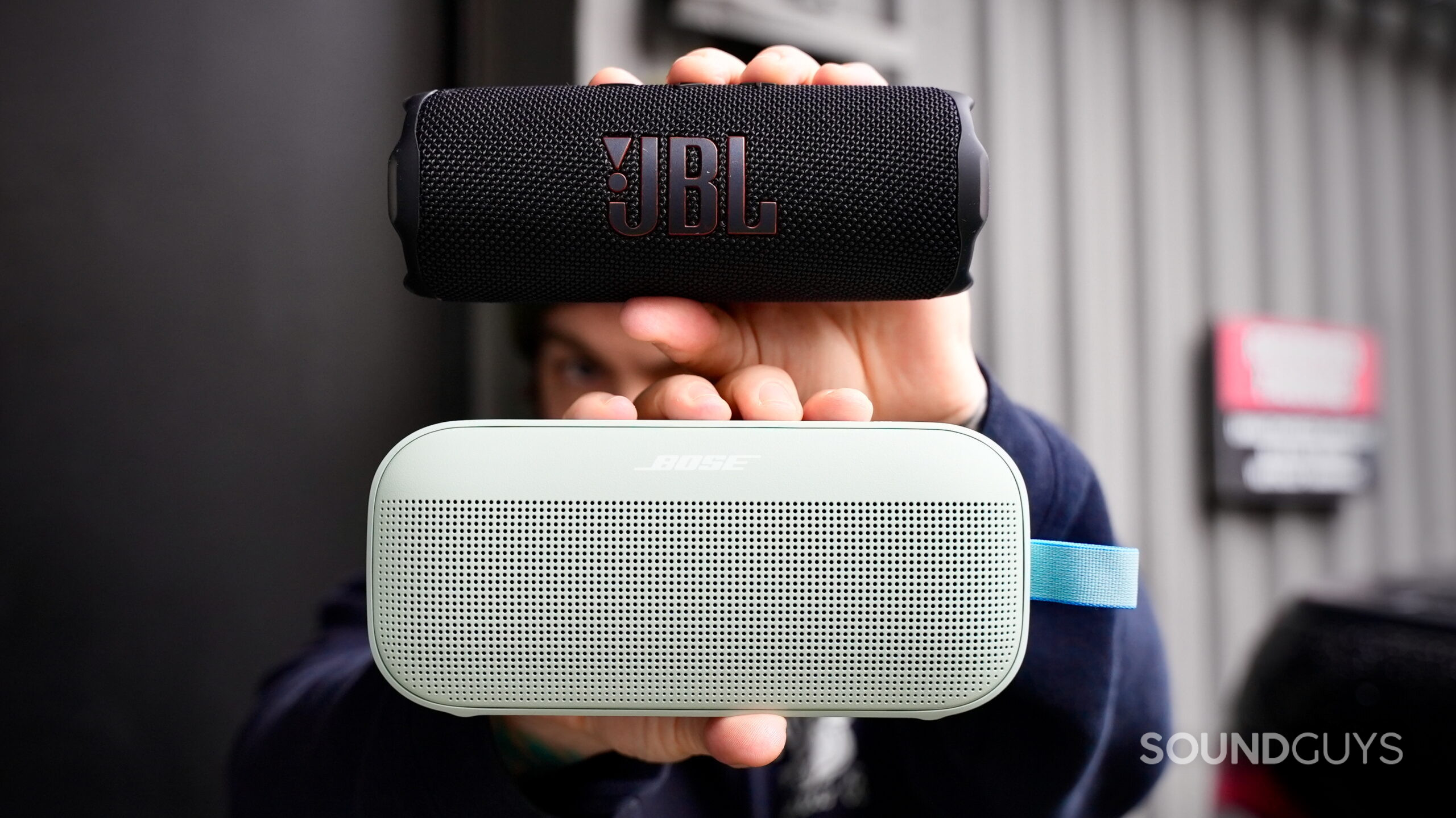
Out of the box, the SoundLink Flex (2nd Gen) offers better bass response, making kick drums hit harder. It also provides better clarity in the treble, which helps bring out details like vocal reverb and piano notes. On the other hand, the Flip 7 leans more into the midrange, making instruments like snare drums and distorted guitars stand out more prominently in the mix. This tuning gives it a slightly more aggressive sound compared to the SoundLink Flex (2nd Gen).
That’s where EQ customization makes a big difference. Thanks to the Flip 7’s 7-band EQ, you can easily tame the emphasized mids while boosting select bass and treble frequencies to get a sound profile closer to the SoundLink Flex (2nd Gen). In contrast, the SoundLink Flex (2nd Gen) only offers a basic 3-band EQ, which limits fine-tuning—though, to be fair, it sounds pretty good right out of the box and doesn’t need much.
In the end, the Flip 7 has a slight edge, thanks to its higher wattage, 35 W, compared to the Bose’s 20 W. The SoundLink Flex (2nd Gen) holds its own with solid bass for its size, but if you increase the Flip 7’s 125Hz slider in the app, you’ll get even more low-end power than what Bose’s basic bass EQ can deliver. Plus, the Flip 7’s extra wattage gives it an advantage in overall usable volume, making it the better choice for small to medium-sized gatherings if you and your friends tend to crank up your tunes.
Should you get the JBL Flip 7 or Bose SoundLink Flex (2nd Gen)?
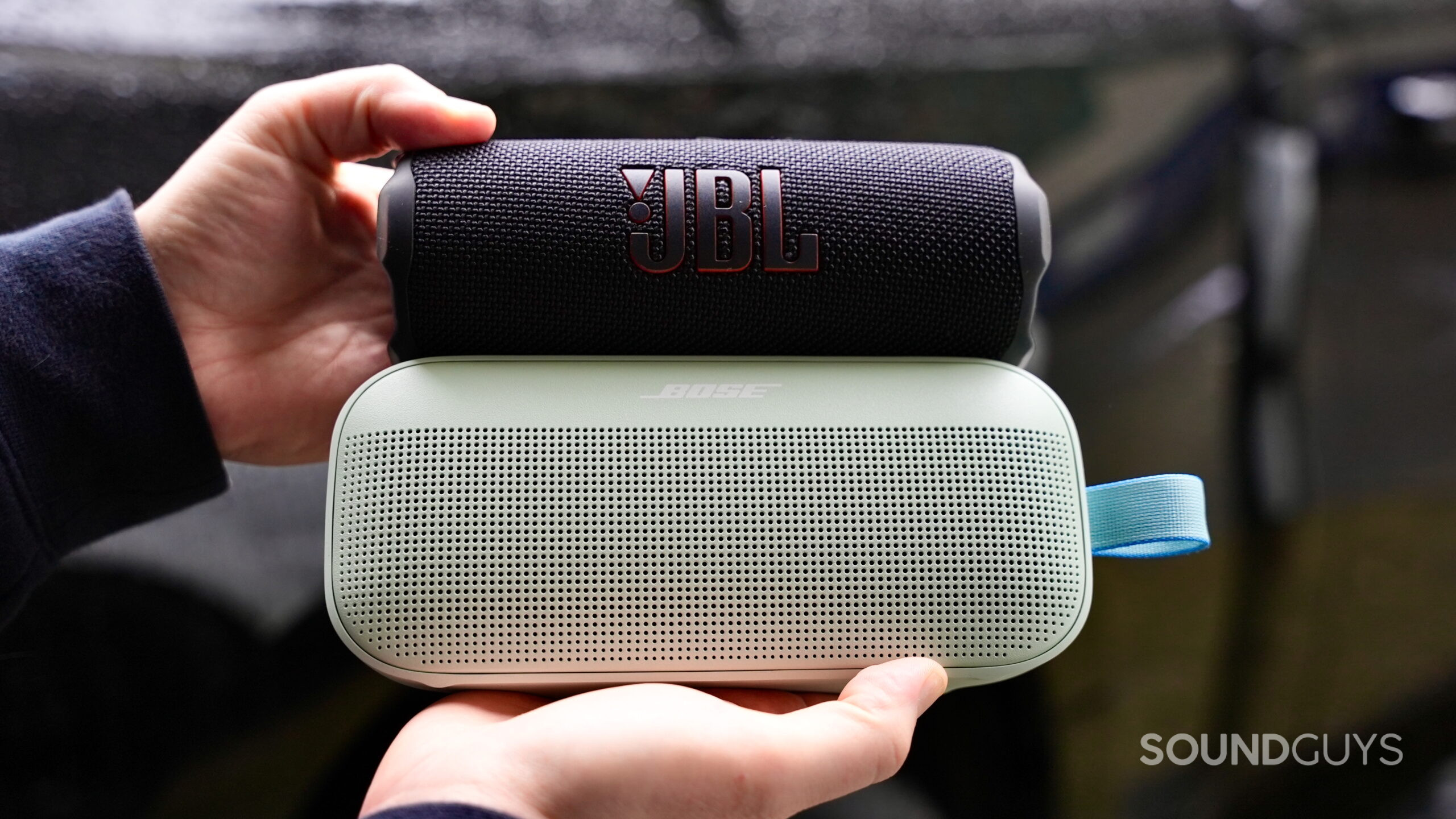
Ultimately, you can’t go wrong with either of these portable Bluetooth speakers. They’re both rugged, packable, ready-for-anything adventure speakers with decent sound for their size. Here are a few things to consider to help you make your decision, as well as some alternatives.
Choose the JBL Flip 7 if:
- You want the most durable option
- You’ll use its new carabiner attachment system
- You prefer having more control over the sound of your speaker via the 7-band EQ
- You want to listen to lossless audio over USB-C
- You plan to pair it with other JBL speakers that use Auracast
Choose the Bose SoundLink Flex (2nd Gen) if:
- You want the best sound straight out of the box
- You’re ok with a slightly lower IP67 rating
- You’ll use its built-in microphone and Voice Assistant features
- You have a Snapdragon-certified device and want the best wireless sound quality.
What should you get instead of the JBL Flip 7 and Bose SoundLink Flex (2nd Gen)?
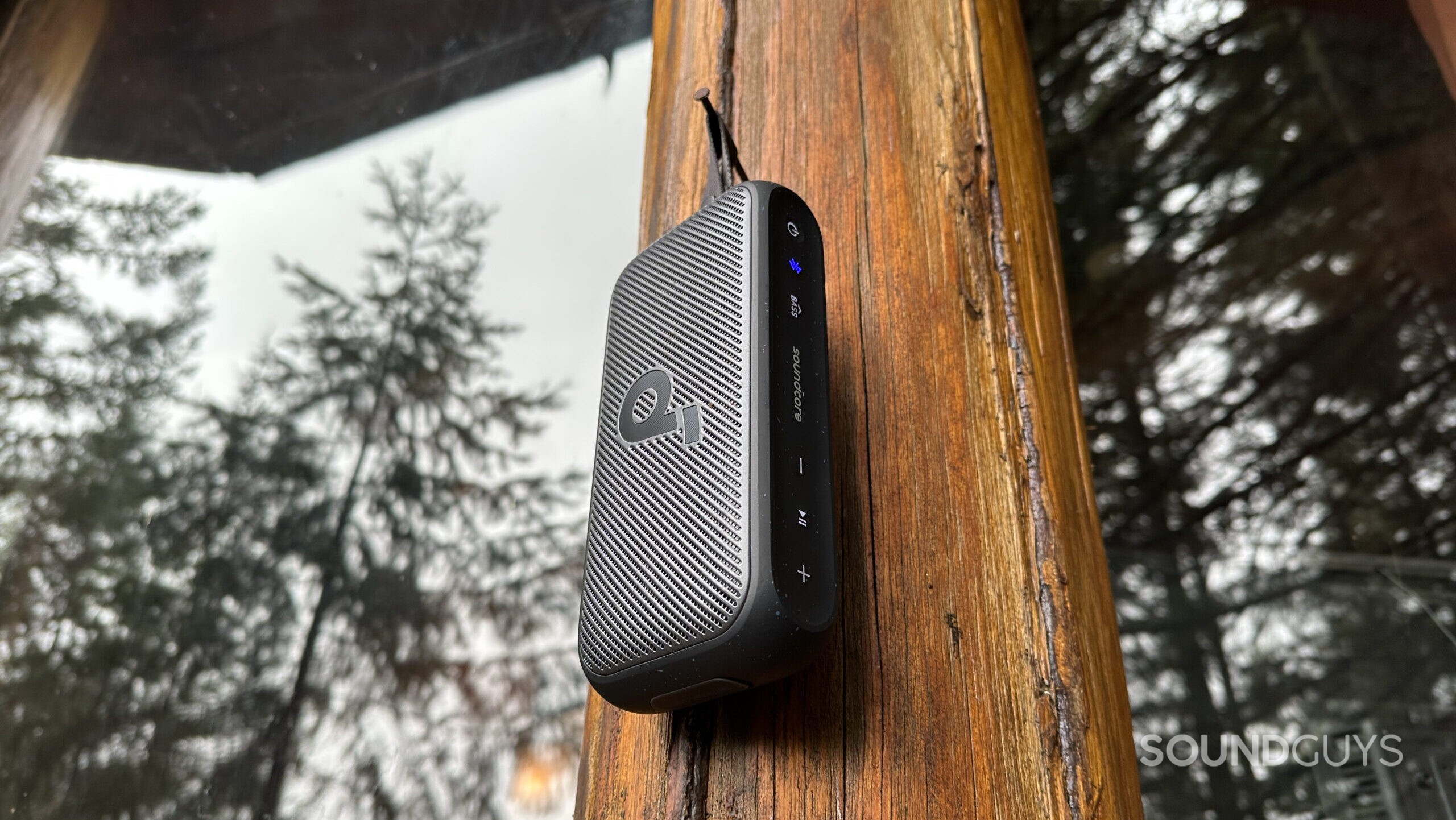
Save a few bucks and check out the Soundcore Motion 300 ($79.99 at Amazon). Sporting a similar shape and design to the SoundLink Flex, the Motion 300 is rugged and adventure-ready, complete with an attachment strap for placement options in the wild. Bonus points to the Motion 300 for providing stereo playback, not to mention support for the LDAC codec if you’re an Android user.
However, if you’re looking for a speaker that offers a little more, consider the JBL Charge 6 ($199 at Amazon). It shares many of the same desirable features as the Flip 7. Still, being a little larger and higher in wattage (45 W compared to the Flip 7’s 35), the Charge 6 offers more output and a much heartier bass response—something to consider if you’re often listening outdoors.
Frequently asked questions
Yes. Both the JBL Flip 7 and Bose SoundLink Flex (2nd Gen) can be used while charging.
Yes. The Flip 7 can connect via Auracast to other Auracast-supported JBL speakers, and the SoundLink Flex (2nd Gen) can connect to other Bose speakers via the Bose app.
The Flip 7 does not feature a built-in microphone, but the Bose SoundLink Flex (2nd Gen) does.
No. Neither the JBL Flip 7 nor Bose SoundLink Flex (2nd Gen) feature an AUX input. However, the Flip 7 does offer audio over USB-C, including lossless.
While neither the Flip 7 or SoundLink Flex (2nd Gen) is designed to be used with a TV, technically they will work if your TV offers a Bluetooth connection.